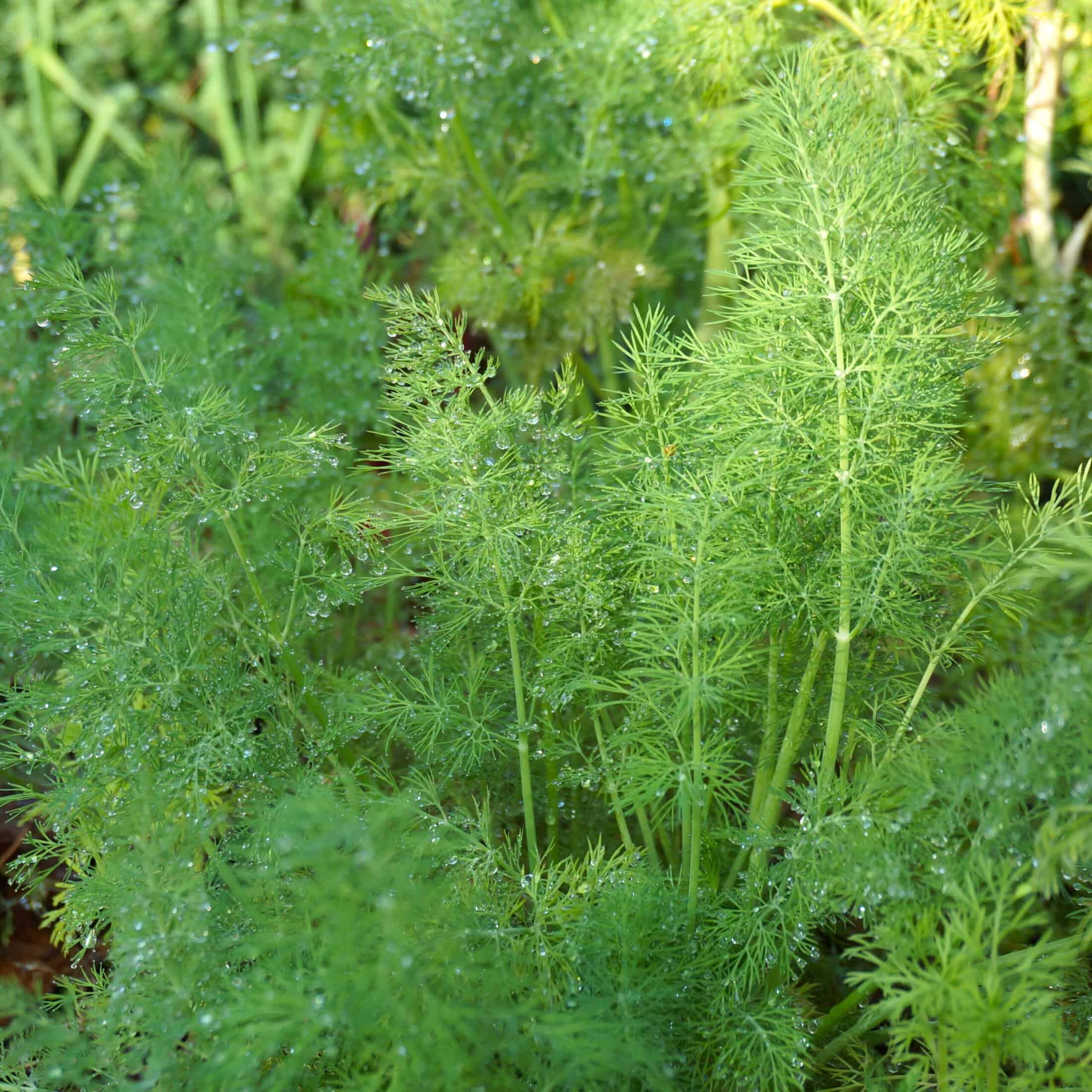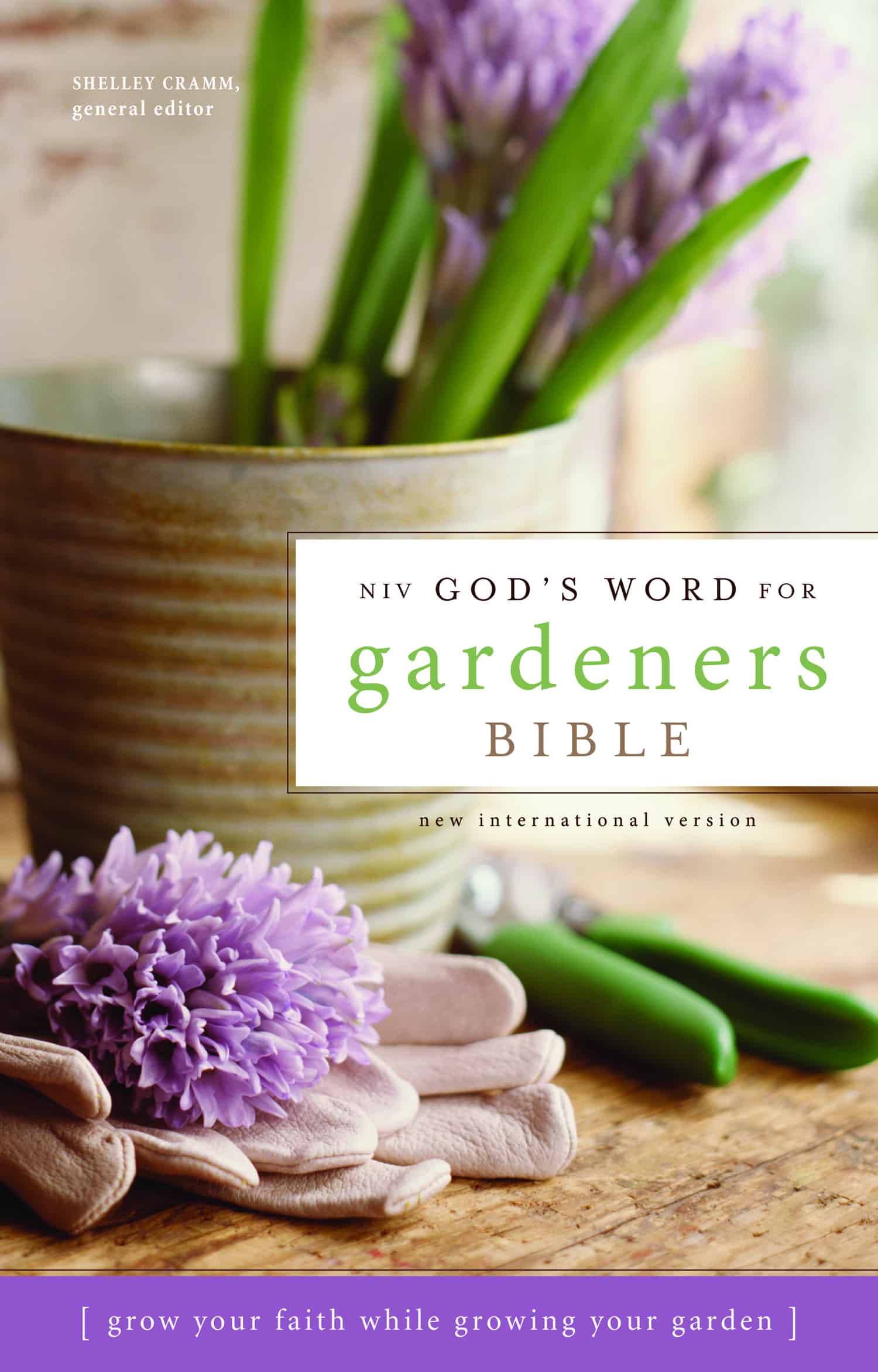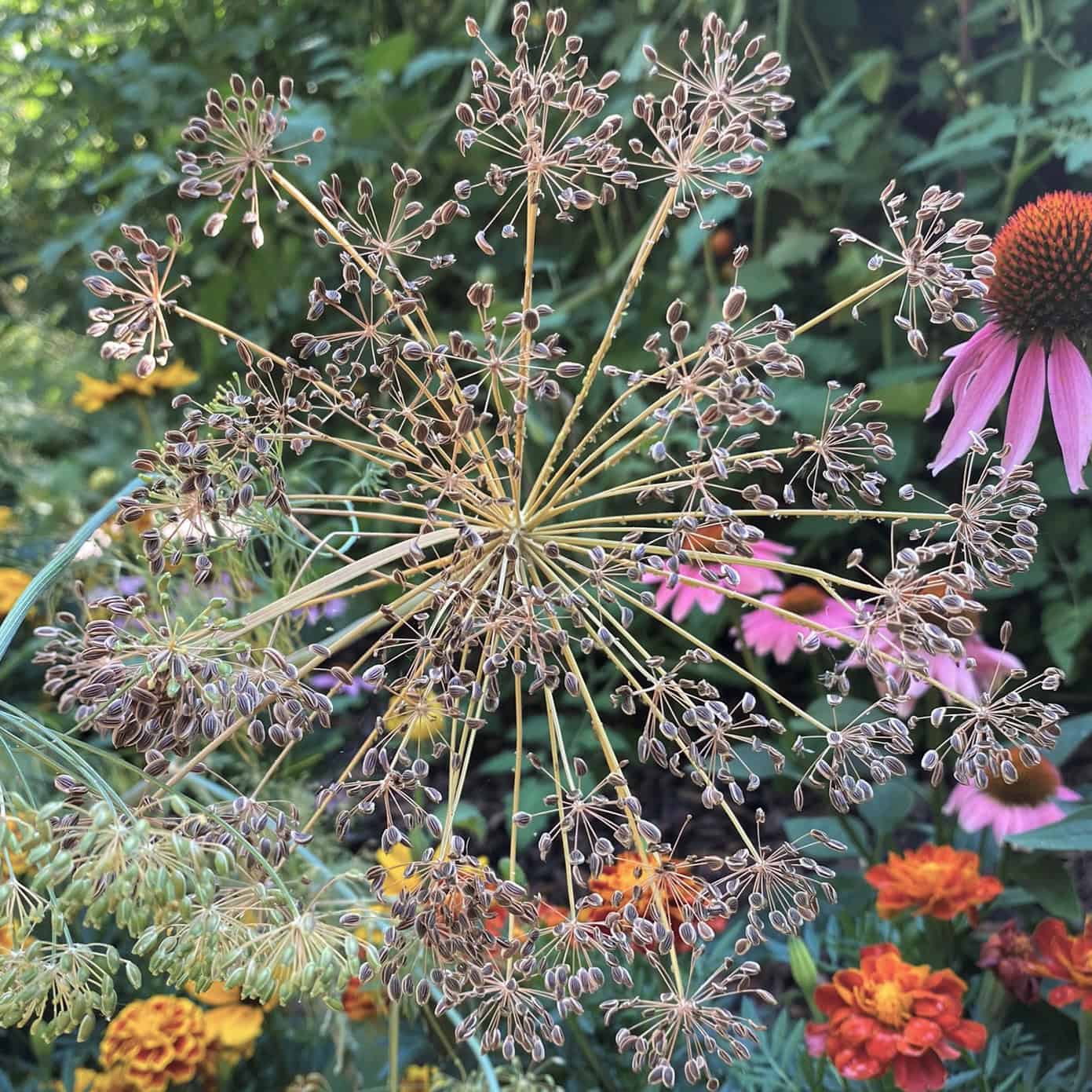Dill
Anethum graveolens
Apiaceae, Parsley Family


“Woe to you, teachers of the law and Pharisees, you hypocrites! You give a tenth of your spices—mint, dill and cumin. But you have neglected the more important matters of the law—justice, mercy and faithfulness.”
Mathew 23:23 NIV

Find dill in the NIV God's Word for Gardeners Bible near Matthew 23:23 in "A Gardener's Clue," as part of the Garden Work theme of Bearing Fruit, pages a-34 & a-35

Does he who plows for sowing plow continually? does he continually open and harrow his ground? When he has leveled its surface, does he not scatter dill, sow cummin, and put in wheat in rows and barley in its proper place, and spelt as the border?
Isaiah 28:24-25 RSV
Cultural Information
| Type | Herbs & Spices |
| Height | 12 to 48 inches |
| Soil | variety of soils, well-drained, workable texture |
| Exposure | full sun |
| Leaves | bright green, finely formed and feathery, strongly flavorful and aromatic |
| Flowers | brilliant yellow, dotted array umbel flowers, forming at end of season in warmer temperatures; plant can bolt 2 to 3 feet when flowering |
| Fruit | Seeds form on drying flowerheads, flat, circular shape, dark brown with light outline, similar flavor and aroma to leaves |
Planting Tips
- Find 4” transplants of dill at your favorite garden center or produce section of your grocery store.
- Transplant to a sunny spot in your garden or larger pot, and keep soil evenly moist – new transplants may require watering every day for the first 2 weeks.
- Dill is easily grown from seed and responds well to direct sowing in your garden beds.
- Dill plants will grow 8 to 12 inches through the cool season. As plants mature and temperatures warm up, expect them to reach 2 to 4 feet! Keep these sizes in mind when determining where to sow seeds – maybe middle to back of garden beds to avoid shading other plants.
- Water seeds every day, keeping soil evenly moist but not flooded. Germination may take up to 3 weeks.
- When seedlings are about 2 inches tall, begin thinning them to 1 plant every 4 to 6 inches
- Thin by cutting tiny stems at soil level, not pulling them from soil, in order to keep the seedlings you want to keep from being uprooted.
- Your trimmed seedlings are ready to eat – use as garnish or dice for instant flavor.
- Let seedlings grow 4 to 6 inches tall before beginning to harvest leaves so they are well-established to keep producing.
- Growing dill is fairly carefree but watch for powdery mildew. This is a milkish white coating that can develop in humid conditions without good airflow. Cut back any branching that shows mildew and discard.
- Dill begins flowering in warm to hot temperatures. Once flowers mature, seeds are formed and the flowerhead dries. Dried seed stalks give the garden a different style of elegance with their umbel structure
- Dill can easily reseed, so if you don’t want the herb to return in the same spot, cut back drying seedheads
- Tasty dill is a favorite of butterfly caterpillars…so you may lose a plant or two to their defoliation!
Garden to Table
- Dill is a distinctive flavor, and its leaves, stems, and seeds all contain the same savor so recognizable as dill.
- Leaves are best enjoyed fresh from the garden straight to your favorite dish – toss with green salad, vegetable medleys, tuna salad, and add to sauces for fish or chicken
- Grow dill along with cucumbers to create truly homegrown pickles
- Trim branches from your dill plants here and there, or from a few different plants, to leave the remaining plants in good overall shape for continuing supply
- If you need to harvest a few hours before serving, store cut stems in a vase of water to prevent wilting in the vegetable bin
- Use herb scissors or dice fine leaves into very small, confetti-like pieces. Stems are edible, but have a coarser texture
- Prepare dried dill by tying branches in small bundles to hang upside down to dry in a cool, dark space with good airflow; same for seedheads, to save seeds for eating or sowing next year
- Dill branches and bright yellow flowers also fill out floral bouquets beautifully
More Research
See Blog Posts on Dill…the herbs and spice tithe in this story moment gave [the Pharisees] empty hearts away (Matthew 23:23). They looked good and smelled good, as the saying goes; most drought-tolerant herbs stay leafy-green through even semiarid seasons, and mint and dill leaves, and cumin’s pungent seeds, have alluring aromas. Yet they are not the nourishment of a meal, merely attractive outerwear, we might say; likewise the elaborate vestments (Matthew 23:5) and hollow words of the Pharisees had nothing of substance to bless others.
-from the NIV God's Word for Gardeners Bible

Does he who plows for sowing plow continually? does he continually open and harrow his ground? When he has leveled its surface, does he not scatter dill, sow cummin, and put in wheat in rows and barley in its proper place, and spelt as the border?
Isaiah 28:24-25 RSV
Photo Credits
©2021 Shelley S. Cramm dill flowers catch bright morning sunlight
©2016 Shelley S. Cramm dill seedlings in early spring
©2023 Shelley S. Cramm dill flowers gone to seed in a Minnesota garden

